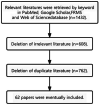Advances in the Application of Bone Transport Techniques in the Treatment of Bone Nonunion and Bone Defects
- PMID: 37963829
- PMCID: PMC10694017
- DOI: 10.1111/os.13936
Advances in the Application of Bone Transport Techniques in the Treatment of Bone Nonunion and Bone Defects
Abstract
Bone nonunion and bone defects frequently occur following high-energy open injuries or debridement surgeries, presenting complex challenges to treatment and significantly affecting patients' quality of life. At present, there are three primary treatment options available for addressing bone nonunion and bone defects: vascularized bone grafts, the Masquelet technique, and the Ilizarov technique. The Ilizarov technique, also known as distraction osteogenesis, is widely favored by orthopedic surgeons because of several advantages, including minimal soft tissue requirements, low infection risk, and short consolidation time. However, in recent years, the application of the Masquelet technique has resulted in novel treatment methods for managing post-traumatic bone infections when bone defects are present. Although these new techniques do not constitute a panacea, they continue to be the most commonly employed options for treating complex large bone nonunion and bone defects. This review evaluates the currently available research on the Ilizarov and Masquelet bone transport techniques applied at various anatomical sites. Additionally, it explores treatment durations and associated complications to establish a theoretical foundation that can guide clinical treatment decisions and surgical procedures for the management of bone nonunion and bone defects.
Keywords: Bone defects; Bone nonunion; Bone transport; Ilizarov technique; Masquelet technique.
© 2023 The Authors. Orthopaedic Surgery published by Tianjin Hospital and John Wiley & Sons Australia, Ltd.
Conflict of interest statement
On behalf of all authors, the corresponding author states that there is no conflict of interest.
Figures



References
-
- Zhang Q, Yin P, Hao M, Li J, Lv H, Li T, et al. Bone transport for the treatment of infected forearm nonunion. Injury. 2014;45:1880–1884. - PubMed
-
- Yang HQ, Qu L. Ilizarov bone transport technique. Zhongguo Gu Shang. 2022;10:903–907. - PubMed
-
- Swiontkowski MF. Outcome in patients with an infected nonunion of the long bones treated with a reinforced antibiotic bone cement rod. J Orthop Trauma. 2012;2012:43–45. - PubMed
-
- Chen P, Yang DS, Guo QJ, Zhen XZ. Clinical observation of Masquelet technique for treatment of posttraumatic osteomyelitis LING Jian‐sheng. Journal of. Clin Orthop. 2019;22(5):610–612.
Publication types
MeSH terms
Grants and funding
LinkOut - more resources
Full Text Sources
Medical

